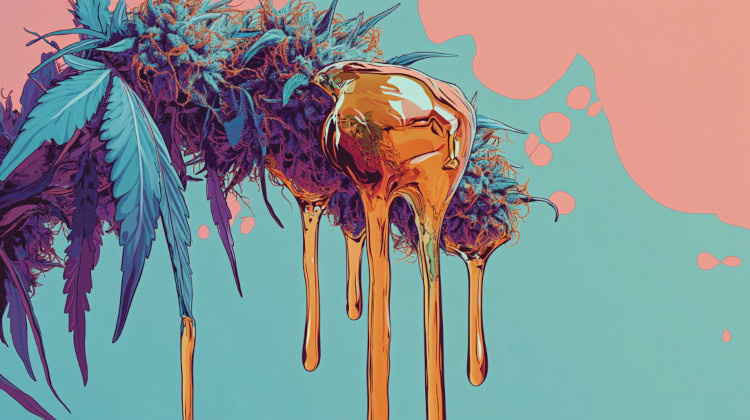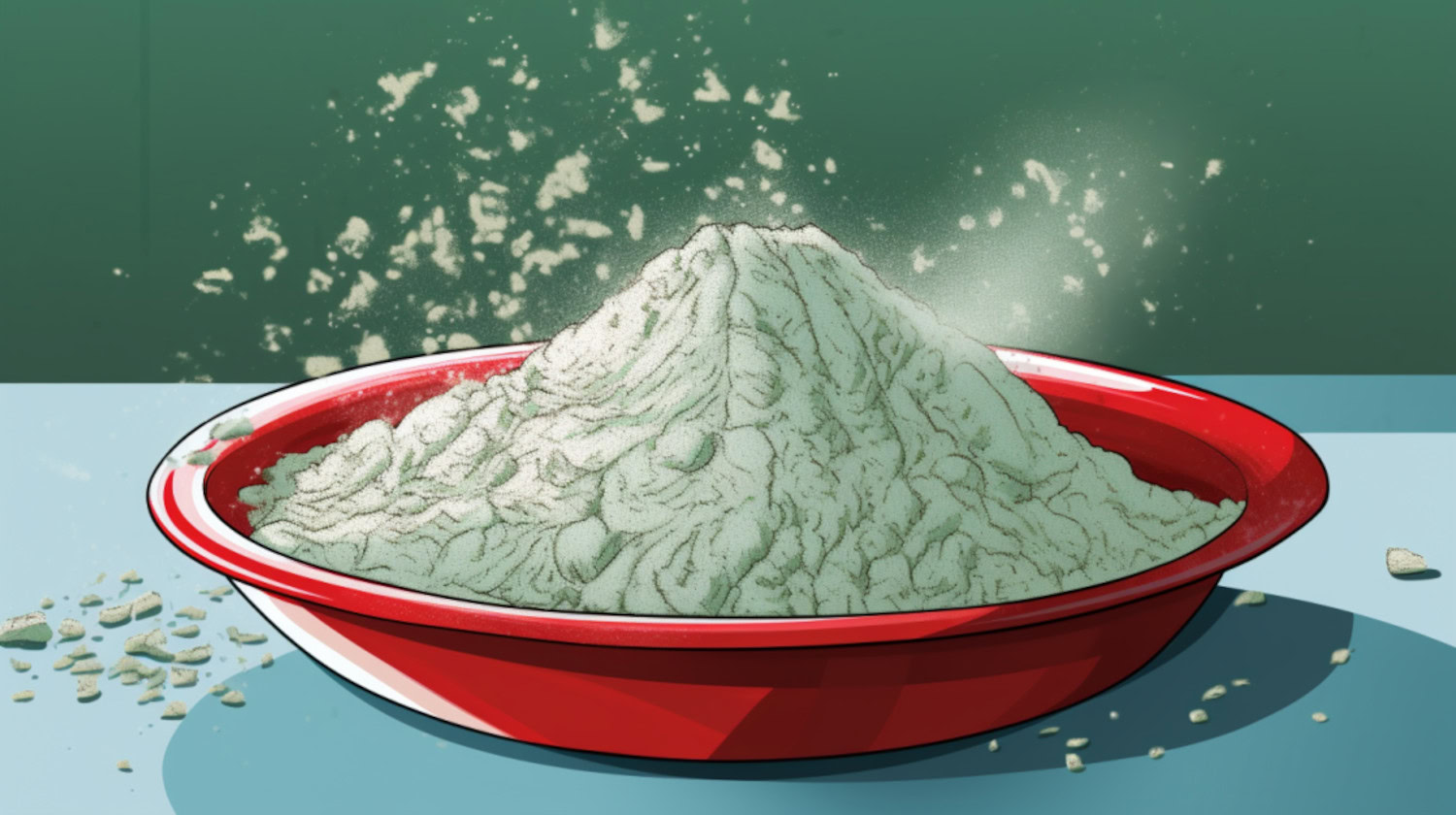In This Article
- What Are Cannabis Sun Rocks?
- Weed Sun Rocks vs Moon Rocks
- What You Need to Make Cannabis Sun Rocks
- How to Make Sun Rocks at Home
- How to Use Weed Sun Rocks
- What About the Grinder?
- Best Strains for Making Sun Rocks
- Weed Sun Rocks FAQs
- What is a Sun Rock?
- Are Sun Rocks Better Than Moon Rocks?
- How Do You Make a Sun Rock?
Key Takeaways About Weed Sun Rocks
- Sun rocks offer cannabis smokers an elevated experience using flower, oil, and kief.
- Unlike moon rocks, a sun rock adheres to certain rules, often elevating its quality over its counterpart.
- Sun rocks can be made at home but can create a significant mess–plan accordingly.
The sun can be potent and intense. Cannabis sun rocks are no different. These heavy-hitting nugs are a high-end combination of the most premium flower slathered in optimal quality concentrate and finished off with a dusting of kief. Plus, all of this comes from the same choice strain. It's a package that makes for an unmistakable and instantly memorable experience to please even the most discerning cannabis connoisseur.
What Are Cannabis Sun Rocks?
Sun rocks are premium cannabis products consisting of top-shelf flower injected with high-quality extracted cannabis oil, like butane hash oil (BHO), rosin, or live resin, and dipped in kief from the same strain.
There are 3 key components to sun rocks:
- High quality cannabis flower
- Premium BHO, rosin, or live resin of the same strain
- Top-grade kief also matching the flower strain
Sure, sun rocks are potent, but that's not the only aim; quality is key. With these golden nugs, it's all about the experience and getting the absolute pinnacle of what a strain has to offer.
With sun rocks, premium is expected across the board, from flower to extract to kief. Furthermore, every component has to come from the same plant, helping to ensure that the expected effects are uniform.
Weed Sun Rocks vs Moon Rocks
If we judge a book by its cover, it might be fair to assume that sun rocks are just a fancy marketing move, switching up the name of a similar product, moon rocks. But what makes sun rocks differ from their lunar-named opposite is a demand for consistent quality.
Factors that set sun rocks apart from moon rocks:
- Moon rocks tend to consist of low-quality buds covered in thick hash oil and low-grade kief.
- Instead of injecting the oil into the flower, some sun rocks roll the flower in the high-quality extracted oil and then apply a crystal-like kief coating.
- Unlike moon rocks, which often use oil sourced from trim and shake of uncertain quality, sun rocks use high-quality extracts made from the same plant type being coated.
- Sun rocks can be more potent, frequently testing at or above 80% THC.
- To ensure its quality, sun rocks’ light and transparent oil allows buyers to easily evaluate plant quality before purchasing.
The main factor setting sun rocks apart is ingredient quality. Sun rocks are all about a premium high-end cannabis experience.
What You Need to Make Cannabis Sun Rocks

Experienced enthusiasts looking to elevate their cannabis flower at home can create sun rocks with the right items and steady hands. Gather the following essentials to start:
- High-Quality Flower: Choose a strain known for flavor and potency–or a personal favorite.
- Premium Concentrate: Opt for something with robust flavor and high THC content, such as BHO, live resin, or cured resin concentrates. Remember that the concentrate used should be the same strain as the flower.
- Kief: Finely sifted kief (sourced from the same flower).
- Small Brush or Dropper: For even oil application.
- Tweezers: To handle the sticky, kief-coated nuggets without making a mess.
These potent nugs can technically be made using extracts and flower from different cultivars. True sun rocks should contain only one cultivar throughout the experience.
Optional, But Good to Have
- Gloves
- Towels
How to Make Sun Rocks at Home
Making sun rocks at home requires a gentle hand, patience, and some cleanup. Overall, it’s a relatively easy, low-risk endeavor that can be completed in just a few steps.
- Warm the Concentrate: Carefully warm the concentrate until it is slightly viscous without being runny.
- Coat the Nug: Use a brush or dropper to coat the entire surface of the nug in the warmed oil. Do so until the flower is fully covered in a thin, even layer.
- Roll in Kief: Carefully pour the kief into a shallow dish. Then, roll the nug in the kief, applying gentle to no pressure while rolling–tweezers can be used instead of hand rolling. Roll the flower until its surface is covered in a crystal appearance.
- Let it Set: Allow the sun rock to rest so the concentrate and kief can bond and cure. Store it in a cool, dry place.
- Enjoy When Ready: Smoke now or store in an airtight container in a cool, dark place to keep fresh for as long as possible.
Making sun rocks at home comes down to coating a nug in concentrate and rolling it in kief. While the process is simple in theory, picking the right quality ingredients makes all the difference.
How to Use Weed Sun Rocks

Sun rocks are used exclusively for smoking, more often than not utilizing one of two of the classic smoking options.
- Glass Pipe or Bong: Sun rocks are often broken up and smoked in a glass bowl or bong. They’re consumed like any traditional bowl. Due to its increased potency, consumers may want to inhale more gently than from a usual bowl. Expect a longer session with more pronounced smoke, both caused by the sun rocks’ extracts.
- In a Joint or Blunt: While possible, mixing sun rocks requires precision that newcomers may not have immediately. Breaking the sticky flower into small pieces and layering it with ground flower for an even burn is not as easy as it may seem. But if done correctly, consumers can expect a slow-burning, highly potent session with ample smoke created.
While smoking sun rocks is the only practical option, that doesn't mean that you can't get creative in planning a satisfying cannabis experience. In this case, the simplicity can be luxurious.
What About the Grinder?
Many cannabis consumers use a grinder when breaking up cannabis flower. But, with concentrate-covered flower like sun rocks, it’s best to stick with hand-breaking. Using a grinder is almost certain to result in a sticky, oil-filled grinder needing a deep clean before using again. Unlike regular flower, ground sun rocks will end up stuck across the top three chambers of a standard grinder. Check the fourth chamber kief catcher for the likely ample extracts to have fallen off.
Best Strains for Making Sun Rocks

One of the many beautiful things about sun rocks is their versatility and adaptability to personal preferences. As long as the flower used comes from a quality cultivar, it has the potential to be an excellent choice to become a sun rock. Essentially, if the flower is fresh, terpene-rich, and contains the compound profile to deliver the desired effects, then it’s a viable contender. From there, it’s up to the producer to select their preferred plant.
When getting started, consider some of the below popular high-THC strain choices:
- GG4: Known for its powerful, relaxing properties and earthy-pine aroma.
- OG Kush: Known for its complex taste of wood and citrus.
- Girl Scout Cookies (GSC): Known for its sweet, dessert-like flavor and potent high.
- Chemdawg: Known for its pungent earth-meets-gas aroma and balanced effects, adding complexity to sun rocks.
You can't really go wrong picking a strain for sun rocks. Just choose something you really enjoy that has available kief and concentrates.
Weed Sun Rocks FAQs
What is a Sun Rock?
A sun rock is a high-quality cannabis bud coated with premium concentrate and rolled in kief–all sourced from the same cultivar. Due to its single-strain use, the combination delivers a potent consumption experience with consistent expected effects.
Are Sun Rocks Better Than Moon Rocks?
Opinions are subjective. Sun rocks are often preferred because they use top-shelf ingredients sourced from the same strain throughout. While moon rocks can be high-quality, many producers use components from various cultivars, possibly utilizing lower-quality flower, oil, and/or kief.
How Do You Make a Sun Rock?
Sun rocks are made by selecting premium flowers, coating them with an equally high-quality concentrate, and then kief. For a more in-depth look at the process, see our above section.
The information in this article and any included images or charts are for educational purposes only. This information is neither a substitute for, nor does it replace, professional legal advice or medical advice, diagnosis, or treatment. If you have any concerns or questions about laws, regulations, or your health, you should always consult with an attorney, physician or other licensed professional.




